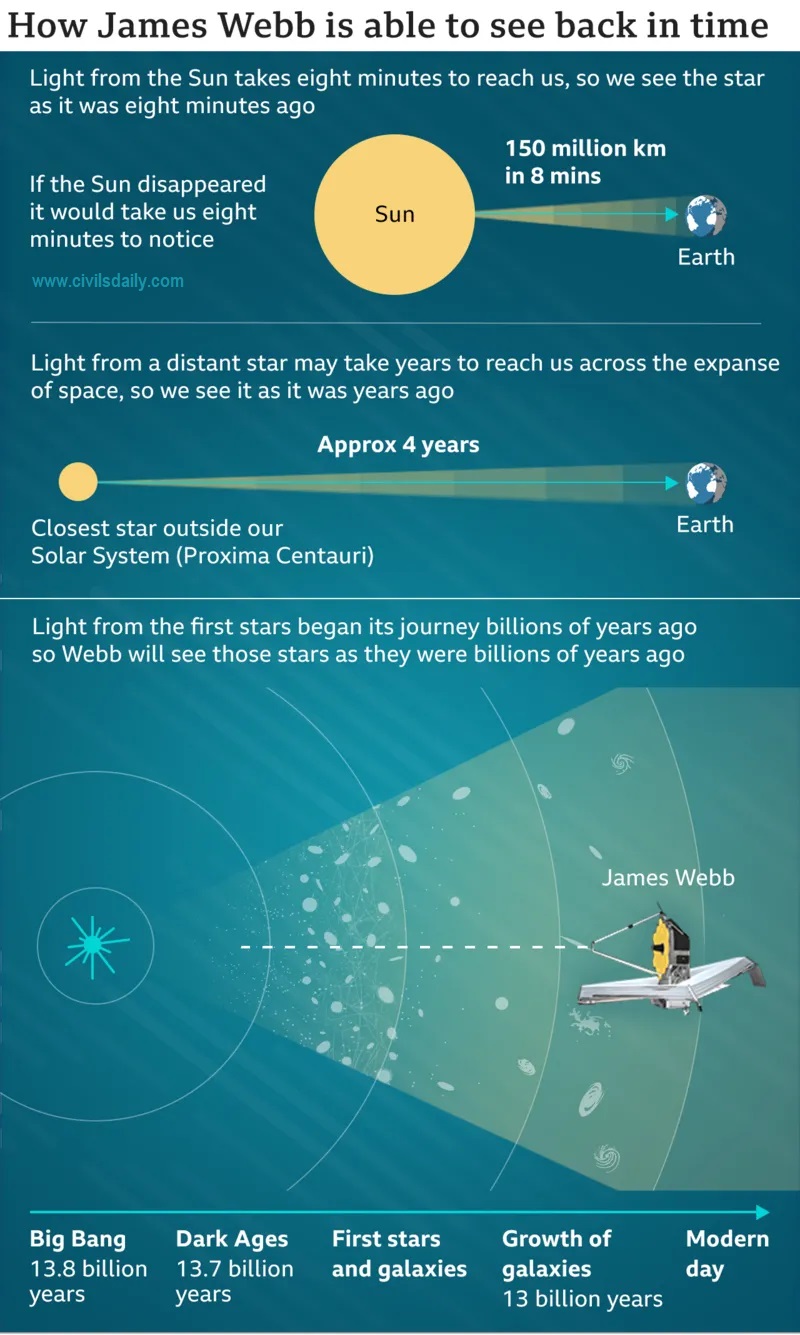Note4Students
From UPSC perspective, the following things are important :
Prelims level: JADES-GS-z14-0 Galaxy, JWST
Why in the News?
The James Webb Space Telescope (JWST), launched by NASA, has unveiled a groundbreaking find It has captured imagery of the universe’s earliest-known galaxy, revealing unexpected brightness and size given its formation during the universe’s infancy.

James Webb Space Telescope (JWST)
Key Objectives:
|
About JADES-GS-z14-0 Galaxy
- Named JADES-GS-z14-0, this galaxy was formed approximately 290 million years after the Big Bang.
- Spanning about 1,700 light-years across, it consists of a mass equivalent to 500 million stars akin to our Sun.
- Despite its ancient age, the galaxy is actively generating stars at a rapid pace, producing around 20 new stars annually.
Scientific Insights:
- Historical Context: Previously, the earliest-known galaxy was dated to approximately 320 million years post-Big Bang, indicating the significance of this new discovery.
- Luminosity Theories: While hypotheses suggest various explanations for the galaxy’s luminosity, including supermassive black holes or unusually bright stars, further research is required to validate these theories.
PYQ:[2012] Which of the following is/are cited by the scientists as evidence/evidence for the continued expansion of the universe?
Select the correct answer using the codes given below: (a) 1 and 2 (b) 2 only (c) 1, 3 and 4 (d) None of the above can be cited as evidence |
Get an IAS/IPS ranker as your 1: 1 personal mentor for UPSC 2024
